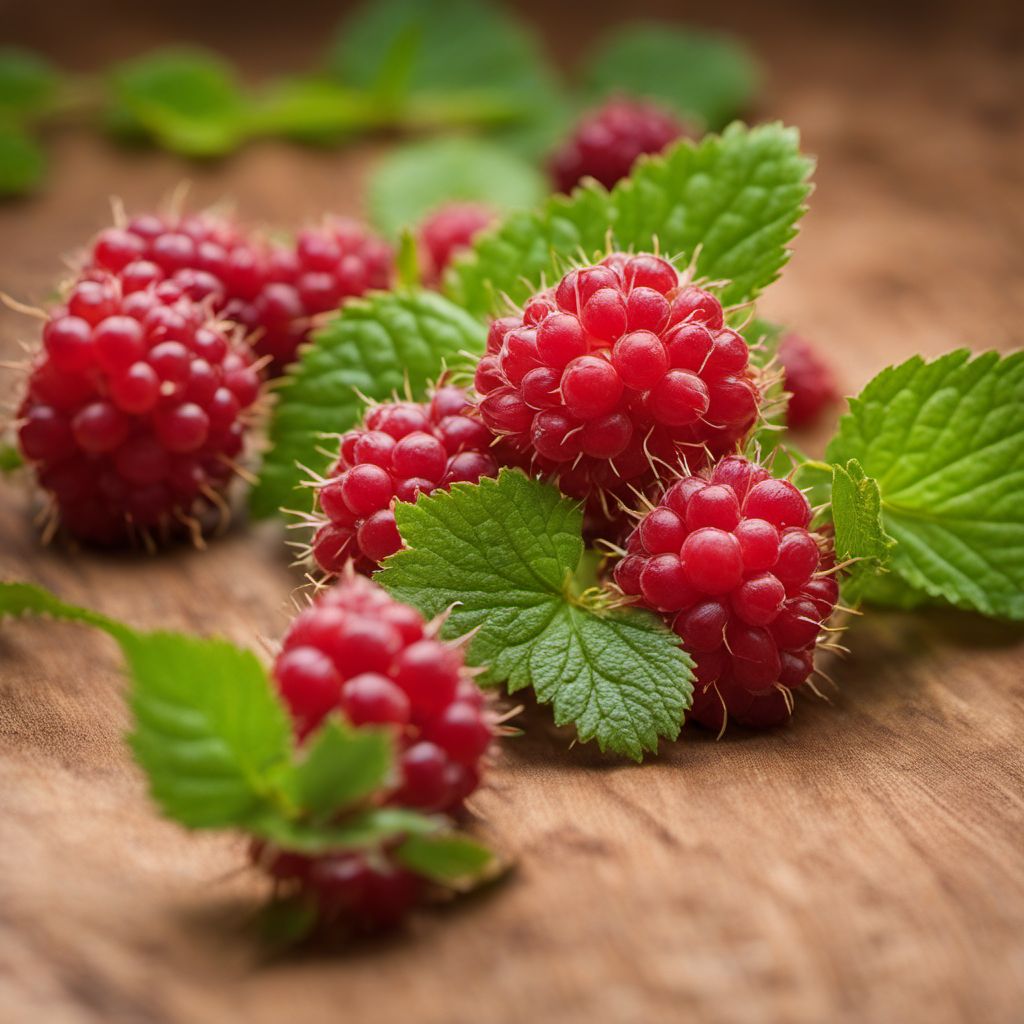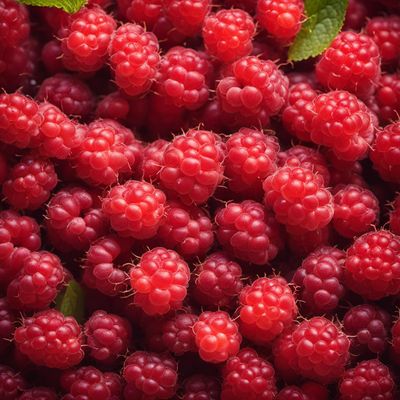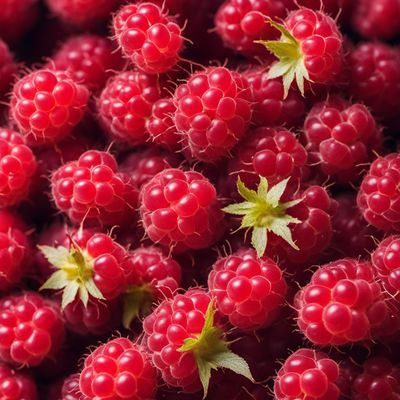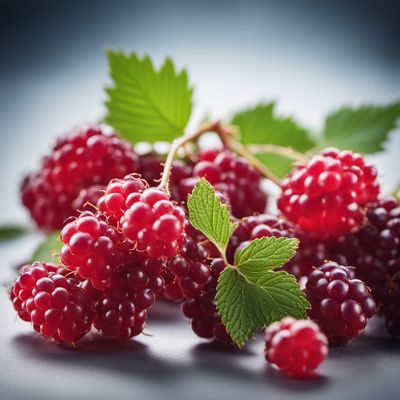
Ingredient
Other species and hybrids of genus Rubus, not elsewhere mentioned
The Berry Bonanza
The berries belonging to the genus Rubus are characterized by their small, round shape, vibrant colors, and delicate texture. They offer a delightful balance of sweetness and tartness, making them a popular choice for jams, pies, desserts, and even savory dishes. These berries are often enjoyed fresh or used in various culinary preparations.
Origins and history
The genus Rubus is native to many regions around the world, including North America, Europe, and Asia. Berries like raspberries and blackberries have a long history of cultivation and consumption, dating back to ancient times. They have been used in traditional medicine and culinary practices for their nutritional benefits and vibrant flavors.
Nutritional information
Berries belonging to the genus Rubus are rich in antioxidants, vitamins, and dietary fiber. They provide essential nutrients like vitamin C, vitamin K, and manganese. These berries are also low in calories and fat, making them a healthy addition to a balanced diet.
Allergens
May cause allergic reactions in individuals with berry allergies.
How to select
When selecting berries from the genus Rubus, look for plump, firm, and brightly colored fruits. Avoid berries that are mushy, moldy, or have signs of spoilage. Fresh berries should have a sweet aroma and be free from any off-putting odors.
Storage recommendations
Store berries from the genus Rubus in the refrigerator, preferably in a breathable container or a paper towel-lined tray to prevent moisture buildup. Consume them within a few days of purchase for the best flavor and texture. Avoid washing the berries until ready to use to prevent premature spoilage.
How to produce
Berries from the genus Rubus can be grown in home gardens or purchased from local farmers markets during the peak season. They require well-drained soil, ample sunlight, and regular watering to thrive. Consult gardening resources or seek advice from local experts for specific cultivation instructions based on the berry variety.
Preparation tips
Berries from the genus Rubus can be enjoyed fresh, added to salads, used in desserts like pies, tarts, and cobblers, or transformed into flavorful jams and preserves. They can also be incorporated into savory dishes, such as sauces for meats or salads for a touch of sweetness and acidity.
Culinary uses
Berries from the genus Rubus are widely used in various cuisines around the world. They are a staple in classic desserts like raspberry cheesecake, blackberry cobbler, and raspberry macarons. These berries are also commonly used in jams, jellies, and fruit-based sauces.
Availability
Berries from the genus Rubus are cultivated and available in many regions globally, including North America, Europe, and Asia. They are commonly found in grocery stores, farmers markets, and specialty food stores during the peak season.
More ingredients from this category

Salmonberries
The Jewel of the Forest

Tayberries
The Tangy Delight

Thimbleberries
The Delicate Delight: Exploring the World of Thimbleberries

Boysenberries
The Alluring Berry: Boysenberries

Youngberries
The Sweet and Tangy Delight

Dewberries
The Wild Berry Treasure: Dewberries

Loganberries
The Luscious Loganberry

Olallieberries
The Luscious Berry: Olallieberries